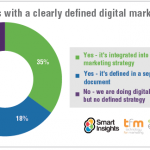Have you ever heard the adage, “think global, act localâ€? If so, you’re in luck – but if not, don’t worry, it’s not too late to learn!
Since globalization entered the layman’s lexicon about two decades ago, the rate of connectivity among international markets has shot up proportionately as well. Of course, it makes sense – use Coca-Cola or McDonald’s as prime examples. These are brands recognized wherever you go in the world, and are some of the most successful global companies. This isn’t because everyone all of sudden got an appetite for a McRib or Big Mac or Coke Zero, but because these companies adapted their products (in both cases, food offerings) to local markets and palates.
McDonald’s is 100% halal certified in all of its Singapore locations, for example, and offers kosher beef hamburger patties cooked over charcoal in both Israel and Argentina (where there’s been a sizable Jewish population since World War II). In Japan, McDonald’s offers green tea milkshakes.
But, localization goes way beyond just adapting your products or services to the local flavor. It has to do with understanding your audience, and making your brand’s message resonate with them, wherever they may be. Consider Nescafe’s website – they change not only the text on the screen to a different language, but they customize the entire user experience based on extensive research into what audiences in China, France, Italy, or the US respond to best.
That includes color scheme changes, layout shifts, and even a change in how often the Nescafe brand logo itself is displayed on the screen. Being able to customize your global brand to local interests and cultures pays off!
Here are 5 mind-blowing reasons why that is:
Stay ahead of the competition
If you know that there are almost as many cell phones in the world as people, and that the top 20 countries in mobile phone use span 5 continents, you’ll be much better equipped to beat out your competitors. This is especially true when it comes to developing a mobile app for your brand, or using a localization services provider for things like content translation in both your app and your website. When you’re dynamic and flexible enough to keep up with these things as your market evolves, you’ll be able to have your brand recognized and understood from anywhere in the world.
Save tons of money and time
In short, understanding that effective, targeted, culturally-responsive marketing that works means you won’t have to spend more money correcting your mistakes later. The famous (and slightly modified) quote from John Wooden states, “if you don’t have time (and money) to do it right, when will you have time (and money) to do it over?†Invest in understanding your culturally diverse markets, and tailor your brand to them – your return on investment will be exponential.
Increase traffic and product use
People will be more inclined to use your brand if they feel like it’s for them. If your website is translated into the local language, for example, you’ll start seeing higher SEO ratings as search engines don’t penalize you for duplicate content. Multiple languages decrease your competition as well, as there are fewer multi-lingual websites as there are monolingual ones. Higher rankings and ratings lead to increased website traffic, and can lead to increased usage and/or sales.
Build trust in a new market
Think about it: if you’re able to offer your product in Bosnia-Herzegovina in both the Serbo-Croatian language in latin script and in ÑрпÑка ћирилица/Serbian cyrillic script, you’ll be almost doubling your reached market. Remember that in many places the language and alphabet you use is a political act. As many brands are looking to transcend both political and physical borders these days, you can do this by knowing your history and prove to your customers that you know and respect their cultures. If you were only to offer it in one of the two languages/alphabets, you’d immediately and unintentionally be branding yourself as a Serbian company or a Bosnian company or a Croatian company, and most likely cheating yourself out of potential customers.
Go global
By putting yourself on multiple search engines, adapting your SEO to local languages, changing your images and colors, music, and phrasing to reflect local cultures in your various markets, you are branding yourself as a company/organization that is globally-minded, informed, culturally sensitive and responsive to your customers’ needs. While the majority of the world is connected to the internet, which is good and what you need to showcase your brand, people also rely on word-of-mouth recommendations. Make sure you’re on people’s minds for the right reasons!
With our world growing increasingly interconnected every day, there’s becoming far less demand for monolingual, monocultural, one-dimensional brands. Take time on the front end to dive deep into local markets where you’ll be hoping to gain a foothold. Spend a little extra to tap into translation and localization web services, get your brand visible on multiple search engines, and develop an app version of your website as well to increase traffic. Taking your brand global by acting purposefully in these five ways at a local level will more than pay for itself in the long run!
Author Bio
Christina Comben is Content Manager at translation and localization services specialists, Day Translations. Multilingual and qualified to MBA level, Christina is passionate about writing, traveling and continued education.













Leave a Reply